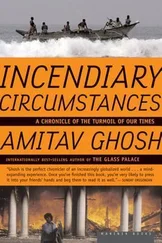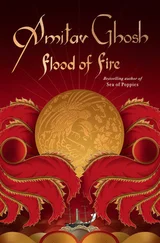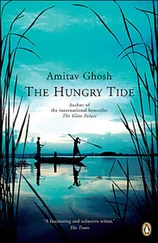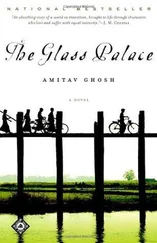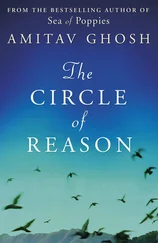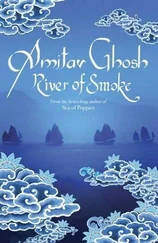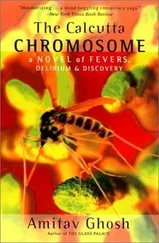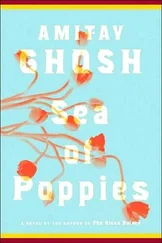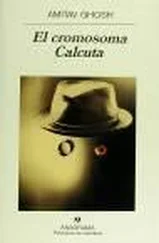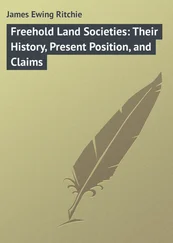Against that background it began to seem increasingly improbable that Ben Yiju and his friends would spell the Slave’s name as B-M-A if it were actually ‘Brahma’. If other Arabic-speakers, many of whom had never even visited India, could spell the term accurately, then surely Ben Yiju, who lived so many years in Mangalore, would have been able to do just as well, or better.
Clearly then, the Slave’s name was not ‘Brahma’. But it might of course have been a diminutive or a shortened form of that word. Yet if that were so, I began to suspect, the word would probably have had a slightly different shape: as a diminutive ‘Bama’ did not have a very convincing sound to my ear. I could think offhand of several other forms, from various Indian languages, which sounded a great deal more persuasive.
At this point I realized that finding an acceptable solution to the puzzle of the Slave’s name was a crucial step in determining his identity — indeed, it was the one clue that could provide some indication of where he was born and what his background and social circumstances were. But the moment that door swung open, a fresh host of problems appeared. The first among them was that there was no indication anywhere about what language the Slave was named in: after all the B-M-A of the documents could have had its origins in any one of several different languages.
Such information as I was able to find about slavery in the region of the Indian Ocean during the Middle Ages only served to complicate the matter further. The slave trade in Ben Yiju’s time was a wide-ranging transcontinental phenomenon, with substantial numbers of slaves being brought into the region from distant parts of the world: from as far away as Central Asia, the Russian steppes, the Transcaucasus and Europe. Mangalore, as a major port, would certainly have been a way station for many of the slave-traders, and it was entirely conceivable that the Slave of MS H.6 had been brought there from the Middle East. Indeed, an obscure reference in one of Ben Yiju’s letters suggested that he himself may have had occasional dealings with certain slave-traders from the Yemeni town of Zabid.
At the same time, there were good reasons to believe that the Slave of MS H.6 was in fact from the region of Mangalore rather than the Middle East: the spelling of his name for one. The slaves who were traded in the markets of Egypt were usually given Arabic names of a distinctive kind — Lu’lu (‘Pearl’), for instance, and Jawhar (‘Jewel’) — names that served to locate them on the margins of human society. But the Slave’s name, whatever it was, did not bear any resemblance to the usual run of Middle-Eastern slave-names, and indeed it did not appear to be of Arabic, or even Semitic origin. While the evidence was not conclusive by any means, it was certainly strong enough to suggest that Goitein was right in assuming that the Slave’s origins lay in India.
But that only served to bring me back to that mysterious acrostic: B-M-A. After puzzling over those three characters for a long time, one last possibility suggested itself to me. In Judæo-Arabic (as in Arabic) a doubled letter is often represented by a single character. It was possible then that the single ‘M’ in the name was actually doing duty for two of its kind. If that were so, it would mean that there were actually four letters in the name: ‘B-M-M-A’. If I then filled in a short vowel after the first letter, the result was ‘Bomma’ or ‘Bamma’, names which I knew to be common in certain parts of India.
Proceeding on that premise I began to look through the names in medieval inscriptions from Tulunad and its surrounding regions. The results were immediately gratifying. I discovered, for instance, that a man called Mâsaleya Bamma, who had worked as a servant for a group of warriors, had been killed, not far from Tulunad, just a few years before Ben Yiju arrived in India. His masters had caused an inscription to be carved in his memory: it was dated 15 June 1126, and it was discovered in a village about two hundred miles north-east of Mangalore. Another inscription from the same region records the name of one Se  i Bamma, a man from a merchant family, who married a pious wife. From those, as well as other sources, it was soon clear to me that ‘Bamma’ had been a common name in that region in the Middle Ages.
i Bamma, a man from a merchant family, who married a pious wife. From those, as well as other sources, it was soon clear to me that ‘Bamma’ had been a common name in that region in the Middle Ages.
Slowly the indications mounted, and just before leaving for Mangalore I came to be convinced that the Slaves name was actually ‘Bamma’ or something of the sort. Exciting as the discovery was, it also brought me to a standstill: I did not know whether the name was derived from the Sanskrit word ‘Brahma’ or from some other source, and I had no idea at all whether it might reveal anything about the Slave’s origins by linking him to any particular caste, religion or social group.
And so it was not without reason that I found myself balancing on the edge of my seat, as I waited for Professor Viveka Rai that morning in Mangalore: it was as though the identity of an elusive and mysterious acquaintance were soon to be revealed.
3
PROFESSOR RAI PROVED to be a soft-spoken, youngish man, tall and bespectacled, with an air of gentle abstraction that hid a precise and immensely erudite mind. He quickly became absorbed in my account of my unravelling of the Slave’s name, and it was not till I reached the end of the story that he broke in to correct me.
I had come very close, he said, in fact I was only fractionally off the mark: the Slave’s name was probably ‘Bomma’ rather than ‘Bamma’.
The name Bomma had once had wide currency within Tulu culture, he explained, and even until a generation or so ago it was commonly encountered in and around Mangalore. Over the last few decades it had passed out of general use as a personal name, but it was still preserved in the titles of various groups and clans in Tulunad. As for the derivation of the word, he said, it was a matter of critical importance to the story of the Slave, but the trail that led to its source was a circuitous one, traversing a wide swathe of Tulu culture and history.
The people of Tulunad were divided, by tradition, into several castes, ranging over a broad expanse of the social hierarchy — from immensely rich and powerful landlords, to poor peasants and Untouchables. But divided as they were by rank and occupation, the Tuluva still shared certain aspects of a common culture: they all spoke Tulu, for one, and they also followed matrilineal rules of inheritance for certain kinds of property. Equally, they shared in the worship of certain spirit-deities known as Bhûtas.
By tradition, each of the Tuluva castes and communities played a designated role in the Bhuta-cult, one providing financial support, for instance, one tending the shrines, others performing the ritual dances and so on. The cult was closely tied to the land, and those who did not own or work on the land — Brahmins, for example — were generally excluded from its rituals and celebrations. These rites were not just occasional events; they followed closely upon each other, even weekly in some seasons, and so the people who participated in them were thrust together at frequent and regular intervals. As a result they stood apart, in some ways, from the other people in the region: their rites, their language, and their matrilineal institutions gave them a distinct identity within the diverse population that had drifted into Tulunad over the centuries.
The Brahmins, on the other hand, played an important role in an altogether different aspect of the religious life of the region; they were the standard-bearers of the Pan-Indian Hindu tradition which formed the complementary other half of the folk-religion of Tulunad. As in much of India, the religious fabric of Tulunad was woven from an equal mixture of local forms of worship (the Bhuta-cult, in this case) and the high Sanskritic tradition. Along with its innumerable Bhuta shrines, Tulunad had its fair share and more of temples dedicated to the gods of the Sanskritic pantheon, and most of the Tuluva people participated enthusiastically in the worship of both sets of deities. There was no contradiction in this, of course, for to them Bhutas and Sanskritic deities represented aspects of divine and supernatural power that shaded gently and imperceptibly into each other. Indeed, under the benign cover of that shade, there was a good deal of trafficking between the two pantheons: some Bhuta deities would occasionally appear within the mists of high Sanskritism, while others fell from favour and vanished into the netherworld.
Читать дальше
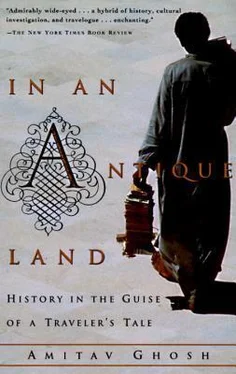
 i Bamma, a man from a merchant family, who married a pious wife. From those, as well as other sources, it was soon clear to me that ‘Bamma’ had been a common name in that region in the Middle Ages.
i Bamma, a man from a merchant family, who married a pious wife. From those, as well as other sources, it was soon clear to me that ‘Bamma’ had been a common name in that region in the Middle Ages.